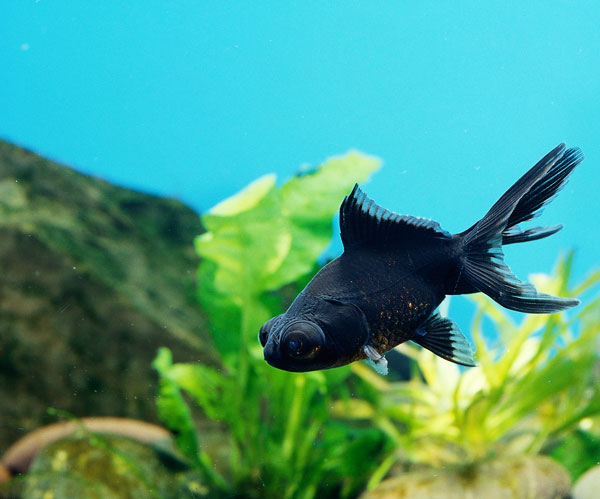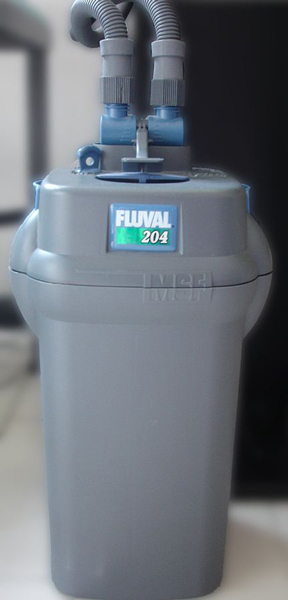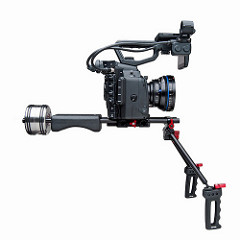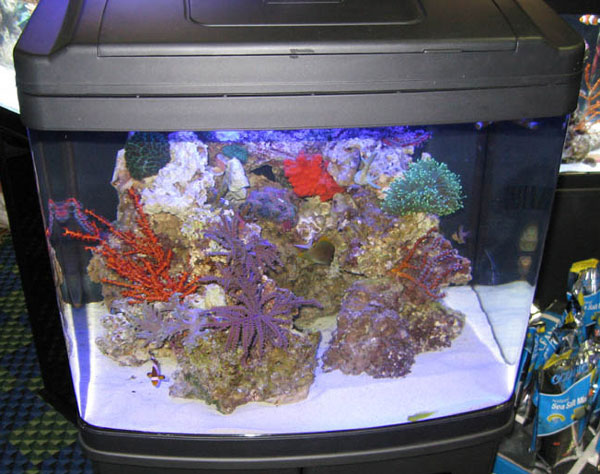
I’m fortunate to be living in the Washington, D.C. area, where several of this year’s annual conventions are within driving distance of my house. Last October, my local club, the Potomac Valley Aquarium Society, got into the act by hosting its annual “Catfish Convention.”
In addition, over the past few months, I’ve been honored to have been invited to several aquarium clubs as a guest speaker (interested in having me speak at your aquarium club? Contact me at JoshuaWiegert@gmail.com). Just a couple of months ago, I was able to speak at the California Organization of Aquarium Show Tropicals (COAST) club, where I was able to meet a number of incredibly dedicated aquarists. Plus, COAST is located not far from BowTie’s offices. I was fortunately enough to meet many of the editors I’ve communicated with for years, as well as a very polite security guard who was very concerned as to whether or not I was lost.
All of this has really helped reinforced in me how important local aquarium societies are. While there are online forums, they just don’t compare to the actual experience of sitting in a room and listening to a really good speaker give a presentation. Nor can the online experience compare to sitting down and sharing a beverage with figures of almost legendary status in the aquarium hobby. At the recent AKA convention I was able to sit and chat for a while with Dr. Robert Goldstein, Ph.D., and even get his autograph.
The local aquarium club is, I believe, vital to the continued preservation of the aquarium hobby. It is here that many new aquarists are able to branch out and meet new friends, and it can be a wonderful source for obtaining interesting new fishes. The local aquarium club can also be a great avenue for conservation projects. Consider getting involved in your local aquarium club and perhaps participating in one of these projects:
Clean Up a Lake, Pond, Stream or River
This project is fairly straightforward. Every area has a body of water (probably several) that can use some improvement, whether it’s as simple as visiting it and removing trash and litter from the surrounding area to something as complicated as assisting with the planting of riparian (shoreline) vegetation and adding new cobble. Additionally, clubs may provide much needed people-power in the removal of invasive species, whether they’re invasive plants, fish or other organisms. In some highly urban areas, clubs may go all out by removing invasive plants and replacing them with natives, pulling out globs of algae and removing litter. Ultimately, efforts such as these can turn even the nastiest of city parks into a beautiful oasis (as it was intended).
Joshua Wiegert speaks at a COAST Club meeting in Southern California.
While some projects can just be undertaken on a whim, it’s always best to have a club member coordinate with the local Department of Natural Resources (DNR). What we consider “litter” can often be beneficial habitat: in many areas, submerged tires, bottles and even plastic shopping carts have replaced the large stones, cobble and tree branches that once dominated the waterscape. It isn’t unusual to find sometimes rare fishes spawning inside a manmade cave labeled “Budweiser.” Removal of this “trash” can actually make the habitat less suitable, and, aside from being unsightly, it doesn’t really do significant harm. The DNR can also provide a huge amount of support for clean-up projects, ranging from additional hands to even helping with some of the logistics (such as providing trucks to cart materiel to the local dump). These projects don’t necessarily need to be limited to aquarium clubs, but any group of local people can get together and clean up a stream, from the Cub Scouts troop to the Ladies Auxiliary Knitting Club.Refocus The Breeder’s Club
Virtually every aquarium club has a breeder’s club, and those that don’t should. This is a group of experienced aquarists who breed aquarium fishes for points, often receiving awards and prizes, or simply t-shirts with logos like “Master Breeder, Ask Me for Details.”
Points are typically awarded on a scale for various categories, based primarily on the difficulty of breeding a particular pair of fish. For example, breeding guppies might earn you a couple of points, while spawning Synodontis multipunctatus earns you quite a bit more.
Quite a few aquarists keep unusual species, many of which are rare, endangered or even extinct in their wild habitat. These range from numerous goodeids (a group of livebearers) to many of the cichlids of Africa’s Lake Victoria (and many other areas) to numerous species of killifish and many other species of fish. Unfortunately, these fish are often prone to coming and going out of fashion among aquarists, with many aquarists moving on to the next trendy group of fish and forgetting those they’ve moved away from. Fifteen years ago, there were lots of aquarists working with Lake Victoria cichlids: now, we don’t hear anything about Victorian cichlids.
Retooling your Breeder’s Club point system to award additional points to aquarists working with species of special concern is a great first step. Retooling it to award more points to aquarists who continue to work with special species and those who help to ensure that domestic stock remains in the hobby is an important second step.
Invasive-Species Fish Fry
Anyone who reads this column should be fairly familiar with the concept of invasive species. Many of these invasive species are actually quite tasty. Consider getting your local aquarium club together to help harvest and remove invasives from a local body of water and make a list of all the invasives and humanely dispose of them. Plants can be dried and carted off to a dump, while fish can be frozen. When you find a larger-sized invasive species, whether lionfish, oscars, Asian carps, tench or even largemouth bass (they may or may not be native to your region; with game fishes like bass, these may be subject to fishing licenses as well as daily limits), and sponsor a tournament to see who catches the largest, or the most. Dispose of these larger species in the tastiest method available. Not only can you help raise awareness about invasives, but it can be a great get-together for your local aquarium society. This can be a great way to involve family members who aren’t into aquariums.
Again, coordinate with your local DNR. They can help find good sites, possibly provide you with lists and identification keys for invasive species, help raise awareness of your cause, and provide you with necessary legal information. Be sure to obey all local laws: chances are you and your club members will need fishing licenses, or you may not need any special fishing licenses, making for a free fishing event for all involved.
What else is your aquarium society doing to work as a conservation group? Leave your comments here!
 Fish and Fungus
Black Moor Q. I have two large black moor goldfish, one larg
Fish and Fungus
Black Moor Q. I have two large black moor goldfish, one larg
 Red Worms
Q. I’ve seen advertisements for red worms as a food for fish
Red Worms
Q. I’ve seen advertisements for red worms as a food for fish
 Canister Filters
In this article we will deal with a type of filter that many
Canister Filters
In this article we will deal with a type of filter that many
 Catch More Salmon - Follow These Simple To Implement Techniques
FLAT Rigs outriggers, shock cord snubber, and rigging kit i
Catch More Salmon - Follow These Simple To Implement Techniques
FLAT Rigs outriggers, shock cord snubber, and rigging kit i
 Marine Nano Tank Problems
Marine Nano Tank Problems
Copyright © 2005-2016 Pet Information All Rights Reserved
Contact us: www162date@outlook.com